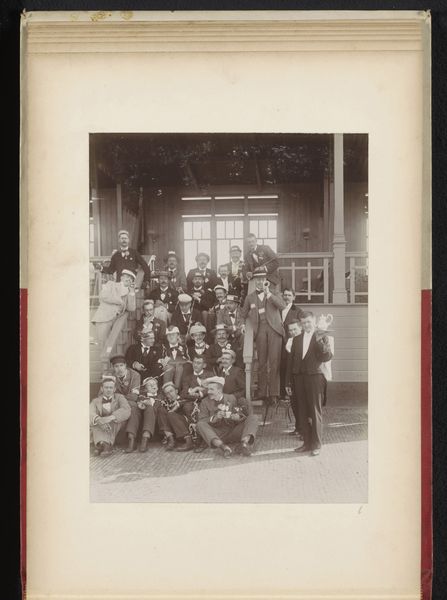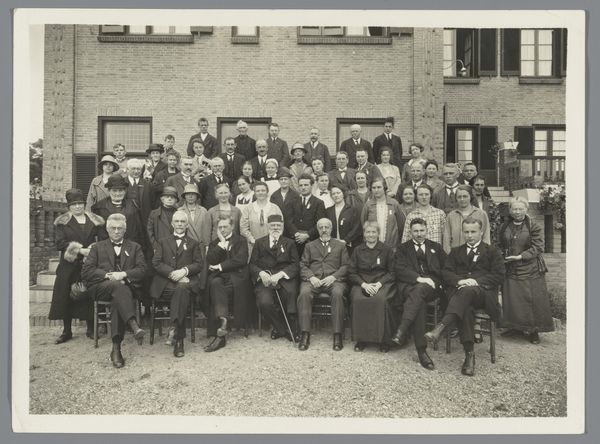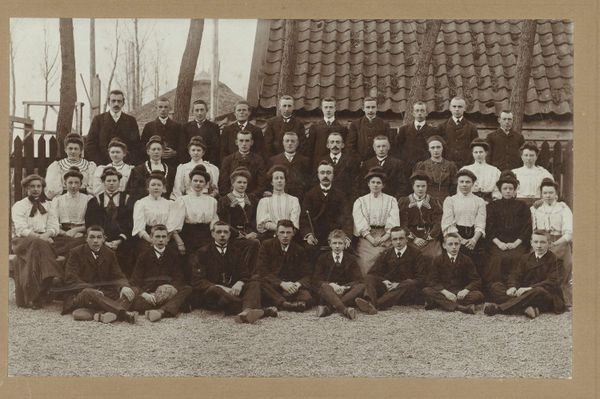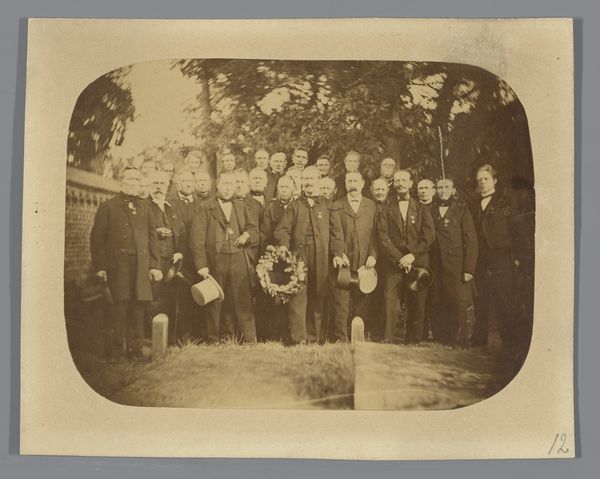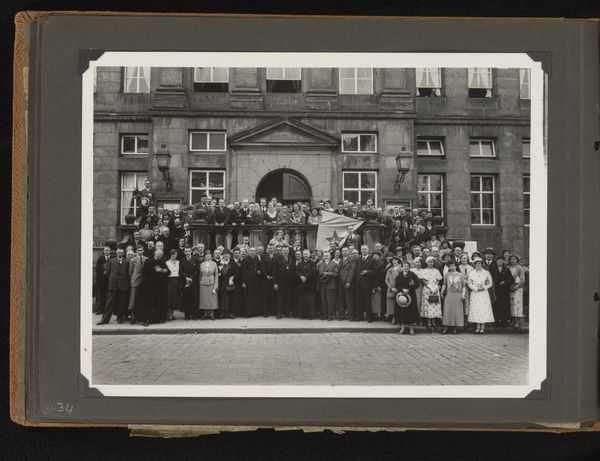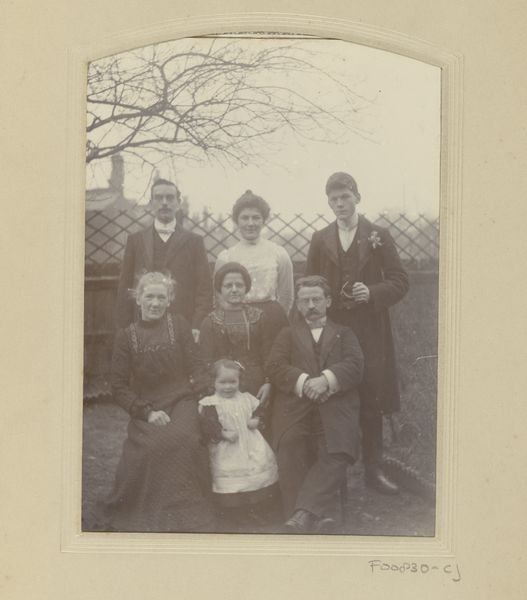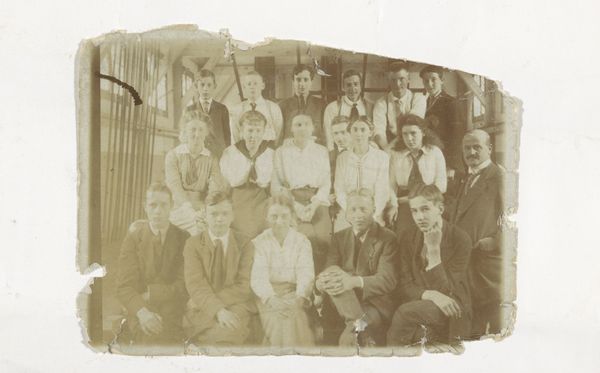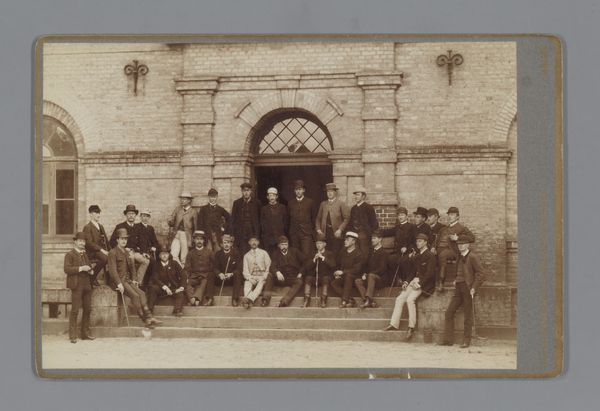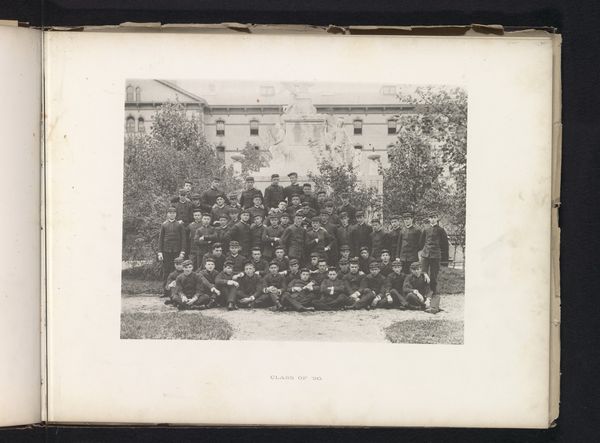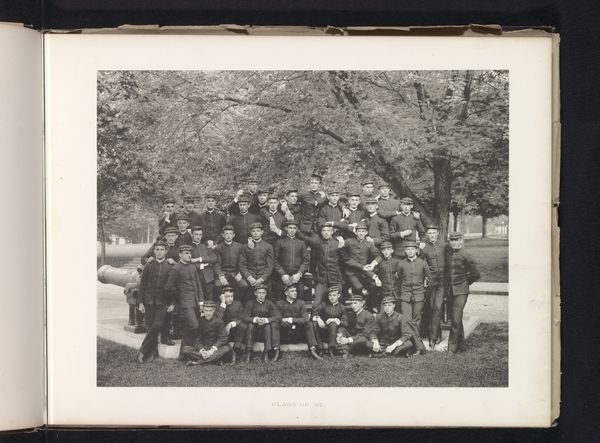
Groepsportret van leden van het Amsterdamsch Studenten Corps c. 1897
0:00
0:00
nicolaasschuitvlot
Rijksmuseum
photography, gelatin-silver-print
#
portrait
#
photography
#
group-portraits
#
gelatin-silver-print
#
19th century
#
academic-art
Dimensions: height 172 mm, width 237 mm
Copyright: Rijks Museum: Open Domain
Editor: Here we have a gelatin silver print from around 1897 by Nicolaas Schuitvlot. It's titled 'Group Portrait of Members of the Amsterdam Student Corps.' There’s something so formal and imposing about this group of men in their suits. What's your read on this piece? Curator: Well, what immediately strikes me is the performative aspect of the image. It's not just a portrait; it's a carefully staged presentation of power and belonging within a specific social structure. These men, the members of the Amsterdam Student Corps, are consciously presenting themselves in a certain light, adhering to a visual language of elite male identity. Think of what this image would communicate about who was in positions of power at the time. Editor: It’s like they’re crafting an image for posterity, controlling their narrative. Is there anything in the composition itself that reinforces that idea? Curator: Absolutely. The grouping, the formal attire, and the setting – probably the Corps’ headquarters - all contribute to this meticulously constructed image of exclusivity. Consider also the institutional power dynamics embedded here. The men who joined this group may become future leaders in law, politics, academia, and business. This photograph then is not simply a historical record; it's an act of self-validation, almost a premonition of their influence. Editor: So, it’s about visualizing and solidifying their future social power? Curator: Precisely. And we have to question whose voices and faces *aren’t* included. Who’s excluded from this tableau? These details can expose social inequalities that photography, at this period, might either inadvertently reflect or actively obscure. What does excluding certain groups say about Dutch society then? Editor: That's a really interesting way of looking at it. It’s not just a snapshot, but a statement. I'll never look at old photographs the same way again. Curator: Indeed! The politics of imagery is all about asking those crucial questions. Thinking about images this way helps us reflect on how visual culture continually reshapes and redefines power structures even today.
Comments
No comments
Be the first to comment and join the conversation on the ultimate creative platform.

